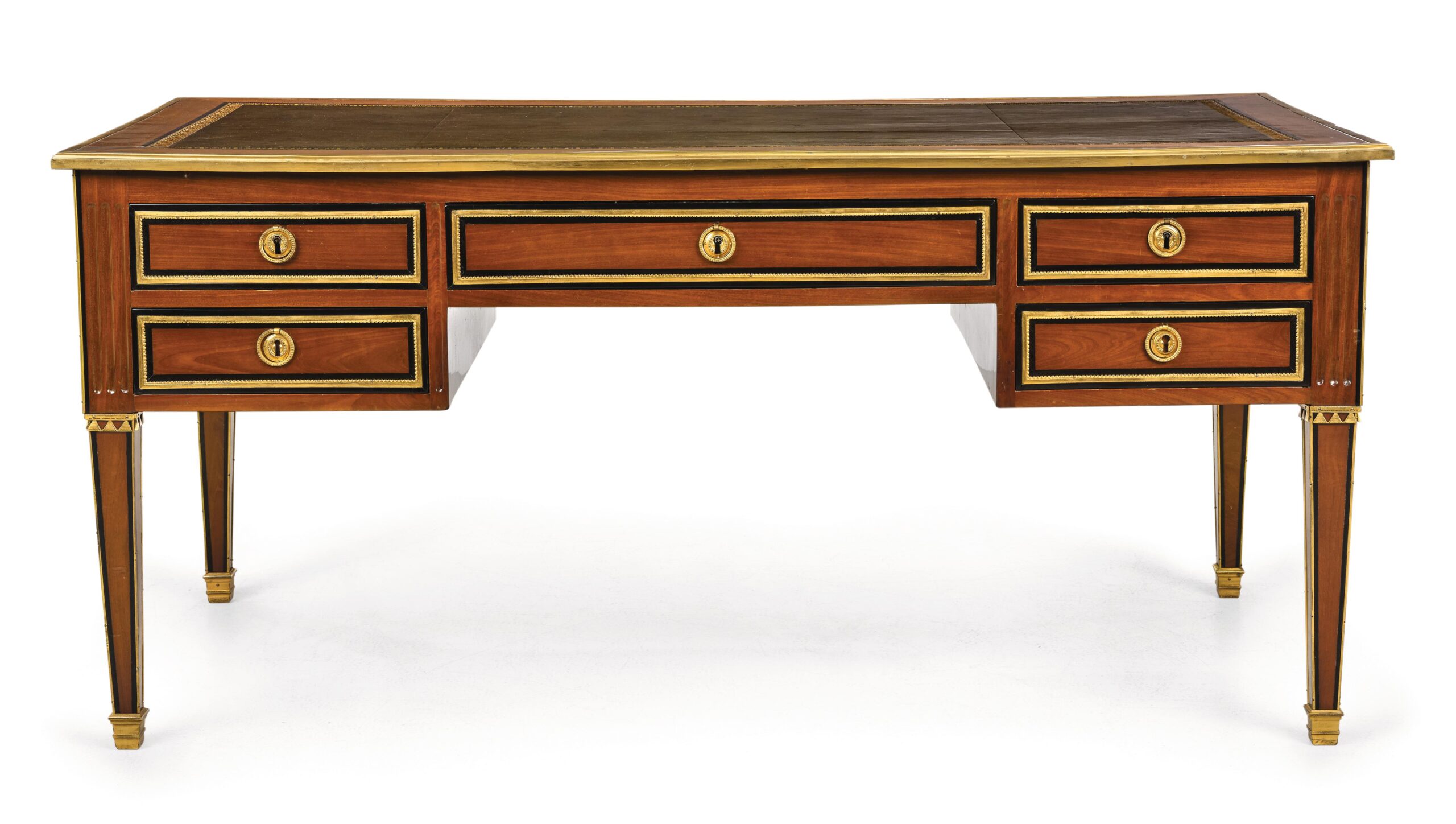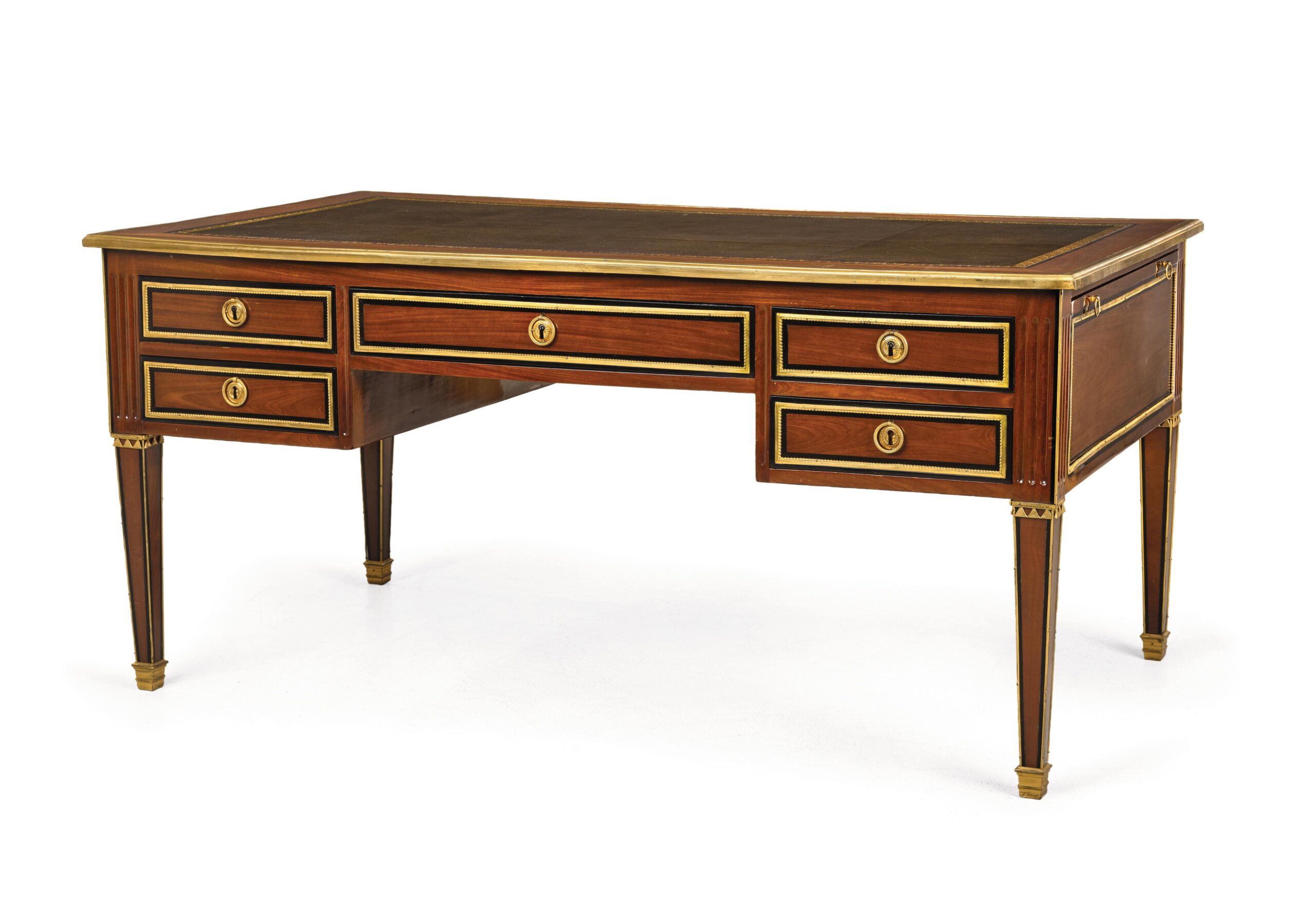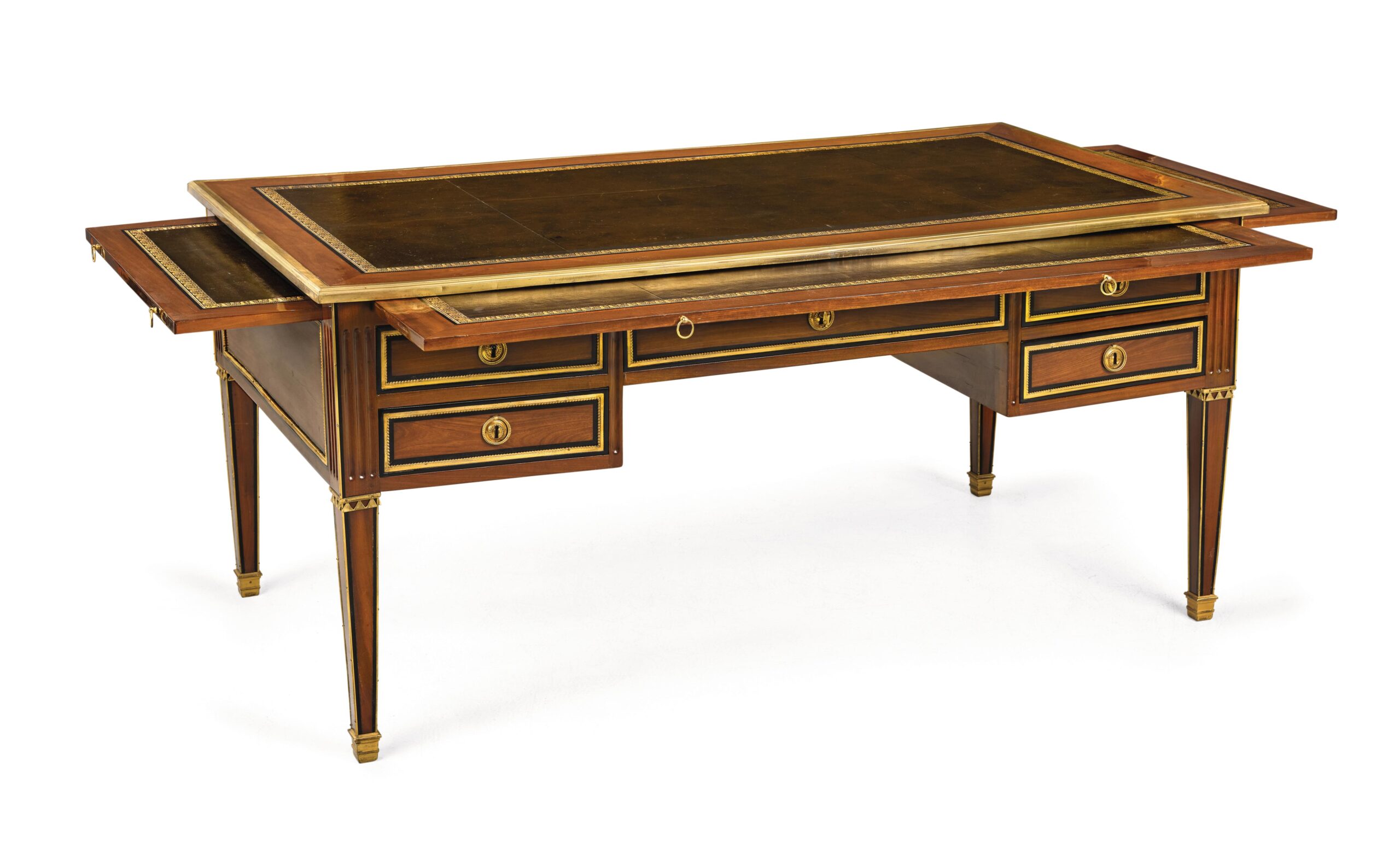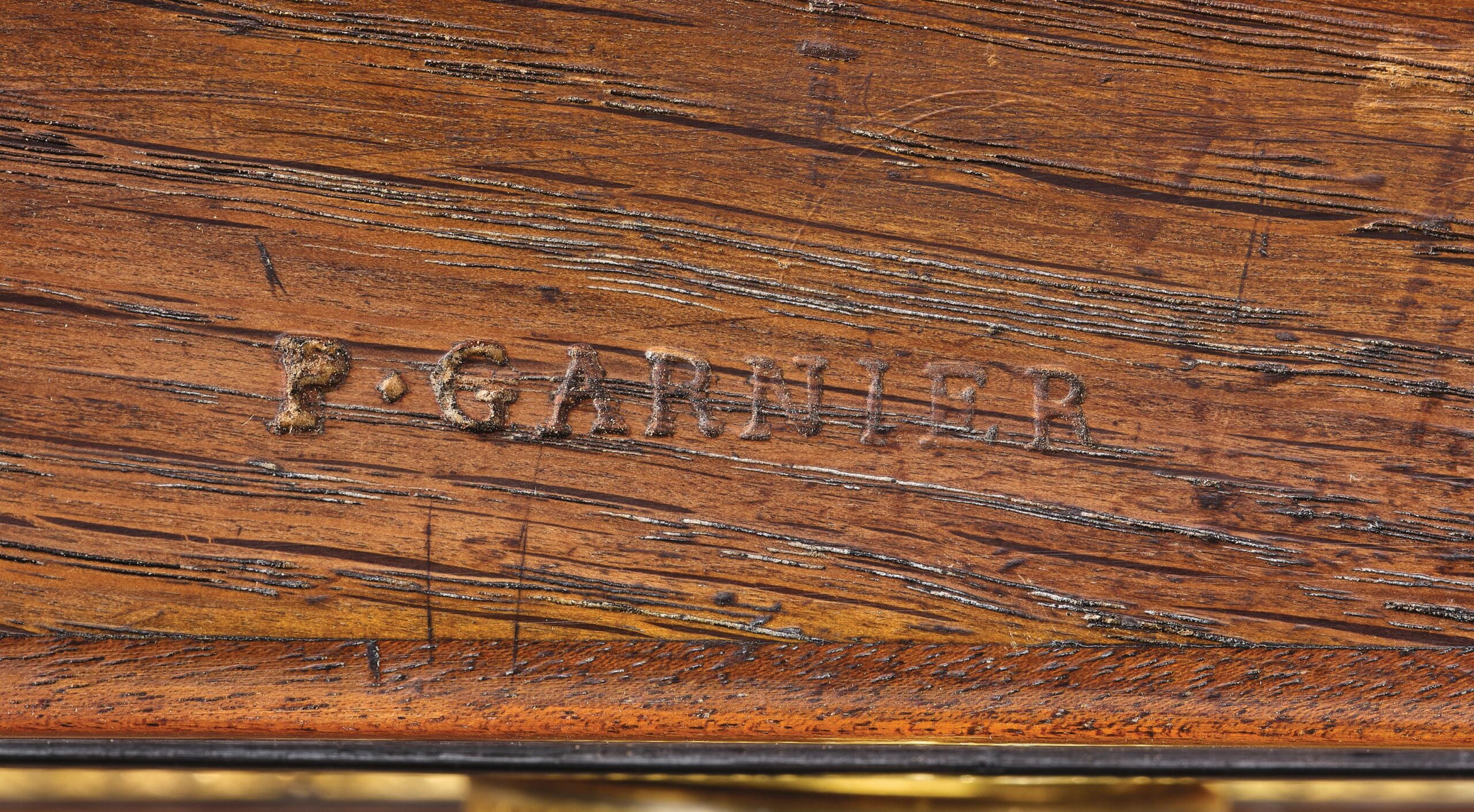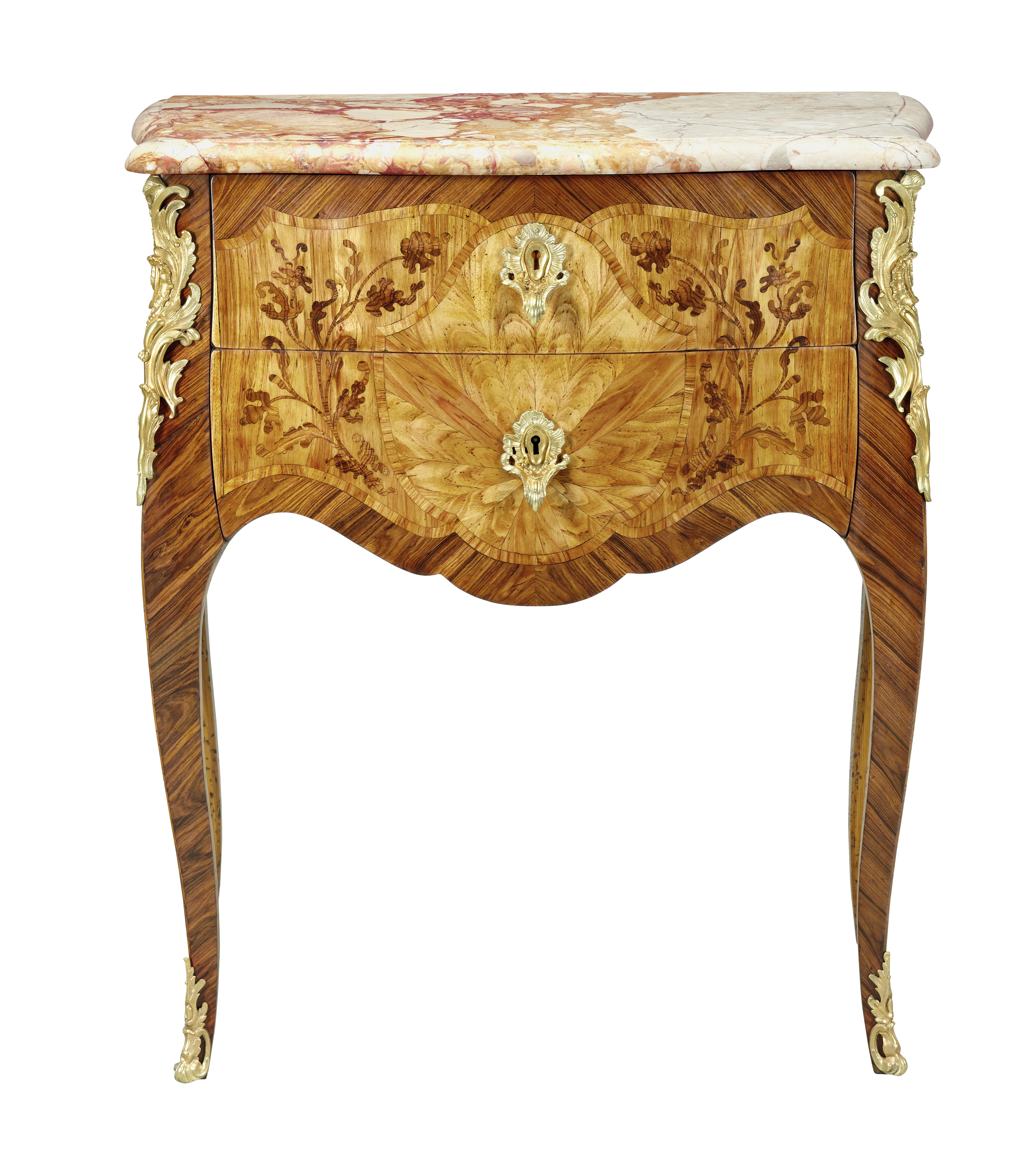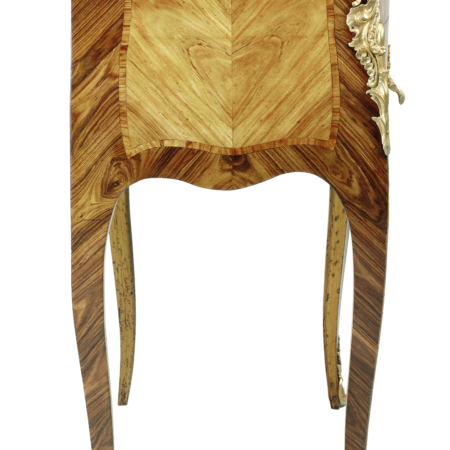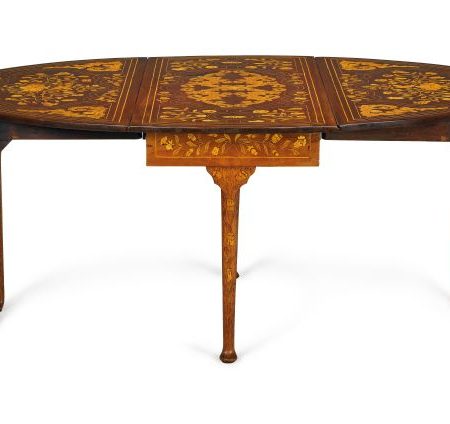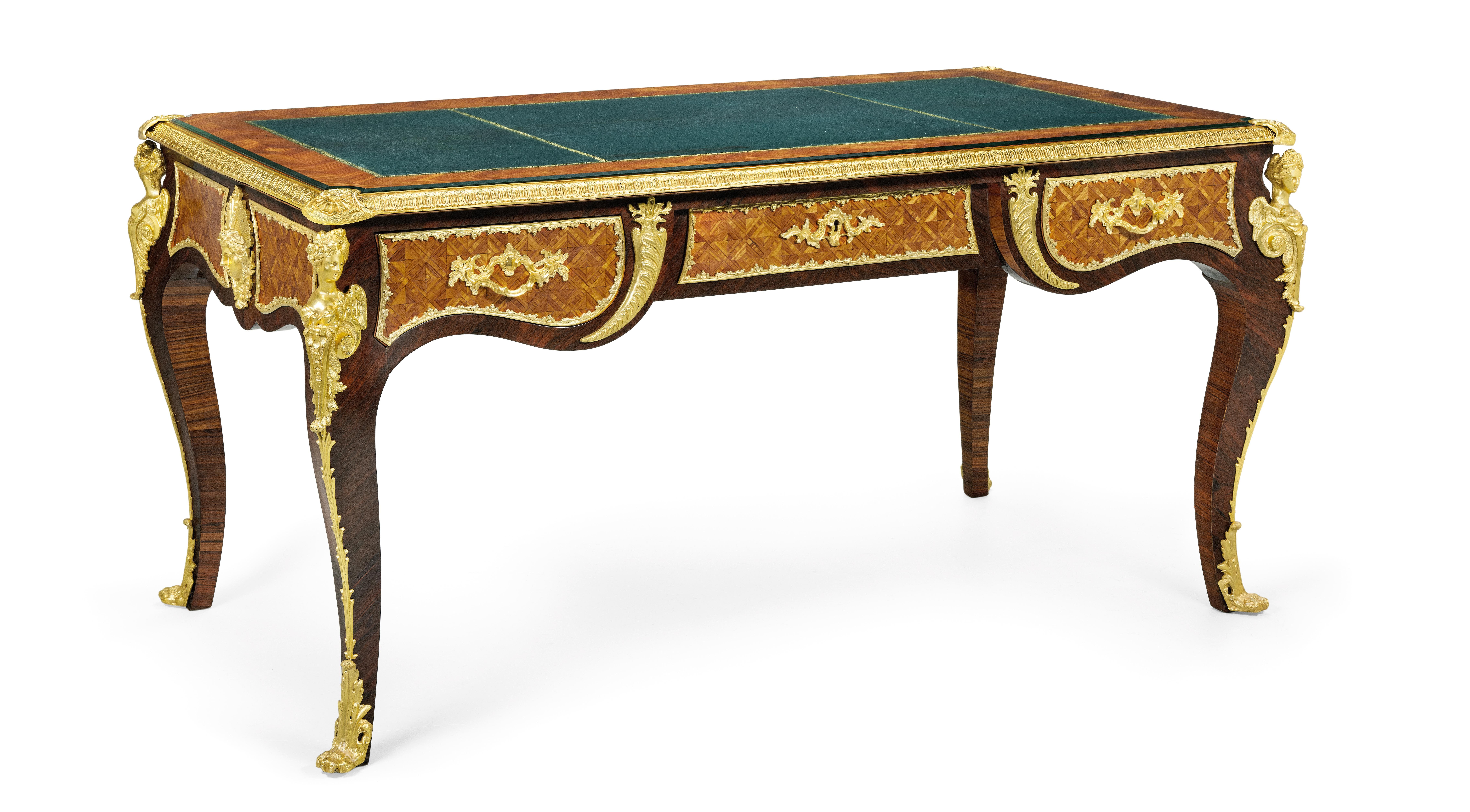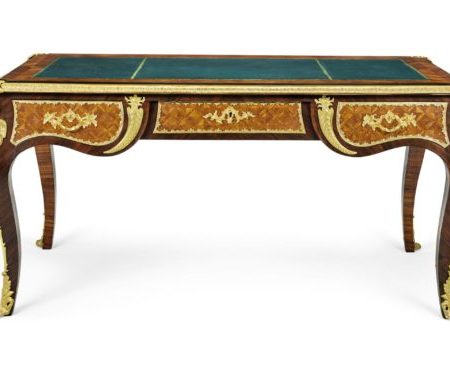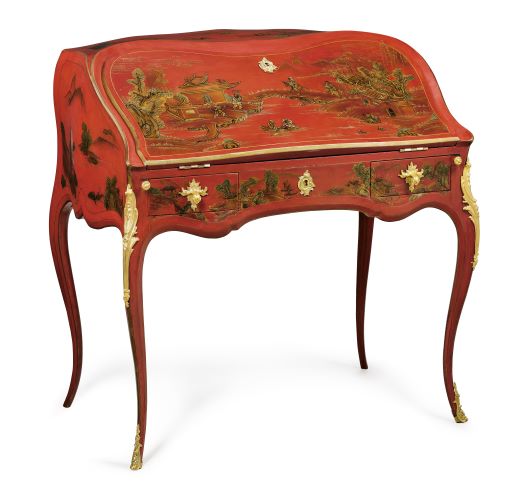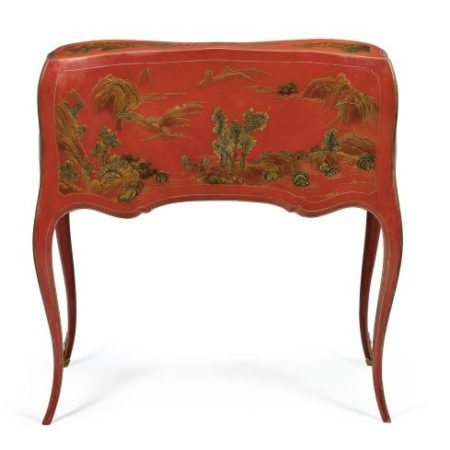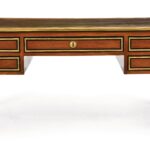France, Louis XVI period, ca. 1780, by the ebenist Pierre Garnier (master from 1742), predominantly oak, mahogany veneered and with ebony marquetry, matted, double-sided drawer design with a total of 10 drawers. 10 drawers, conical feet, gilt bronze ornamental fittings and panel edging, extendable extension panels on 3 sides with gold-decorated leather covering, stamped P. Garnier on the underside, approx. 79 x 171 x 94 cm, can be enlarged to approx. 275 x 148 cm, minor signs of age and wear.
Pierre Garnier, (1720-1800), became a master in 1742 at the age of 22 and a member of the Parisian “Jurande des Ebenistes”. His work illustrates the evolution of all styles in France in the XVIII century, beginning with the early Louis XV period, through the Transition and Louis XVI, to the Directoire, the period of the Great French Revolution. In the “L’ Almanach général des Marchands du Royaume”, Garnier is cited as one of the most important ebenists of the XVIII century, alongside Oeben, Riesener, Weisweiler and Leleu. He is regarded as one of the inventors of the “style à la grecque”, which heralded the beginning of classicism. In the “Petites Affiches” of 1800 – in his obituary – he is described as someone who for 50 years produced a quality that makes any praise superfluous. In addition to the royal family, he supplied the entire aristocracy. His works can be admired in the Louvre, Musée Jacquemart-André, South Kensington Museum and Metropolitan Museum of Arts, among others.


